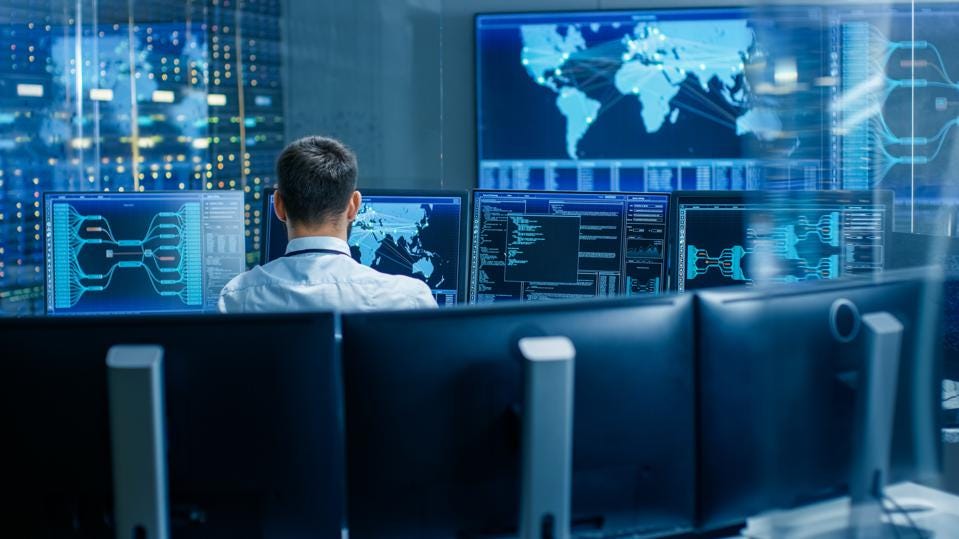This article is orginally posted in Forbes.
The control room is the nerve center of any plant operation: the place where operational personnel makes sure the facility and everything in it runs smoothly, effectively and efficiently. The iconic control room scenes in the 1995 movie Apollo 13 give us a classic portrayal of what many casual observers might think of as the stereotypical control room setting: a big room filled with lots of smart people, crunching the numbers, monitoring the mission and making sure everything stays on course.
Of course, when things go wrong, whether it’s in space or on the plant floor, the role of the control room is to make sure the problem is resolved and the mission continues.

In the context of plant operation, keeping the mission on course means producing at the highest levels of performance and quality. The technological advancements that have occurred in recent decades provide the control room with an enormous volume of valuable data—much of it delivered in real time.
At the same time, the need for faster decisions also grew, making the mission of monitoring even more challenging and complex. It’s an opportunity to take an enormous leap forward in the way we collect and utilize data and engage with and optimize production plants.
Augmenting our ability to manage and leverage this increasingly demanding volume of data will be required to make that leap a reality. Here is what the industrial control room of the future might look like—and how the technological changes already underway are likely to play out in the years ahead.
An Evolving Landscape
In recent decades, process control technologies have evolved to provide more reliable real-time and user-friendly information. The role of the control room as the ultimate interface between the operators and the plant hasn’t changed, but the nature of that interface has shifted.
From the industrial plants of the 1980s with physical buttons and gauges to the flexible displays and customized user interface of the 2000s, our ability to digitally depict and manage physical spaces and processes has already come an enormous distance. The next jump would transform the way the operator interacts with the plant.
There is thrilling potential in the fluidity and engagement of borderless and virtually unlimited virtual screens—and in the utility of wearables and other devices that allow quicker and more intuitive access to information and insights.
Fluid And Dynamic Engagement
The next big frontier of control room innovation isn’t just natural interaction and dynamic visualization, but the breaking down of barriers across the board. While smoother and more seamless interfaces will combine with game-changing new data-gathering and monitoring capabilities to unlock new possibilities, the most effective tool in the expanding tech toolbox is AI.
Extraordinary new advances in AI technology are already helping decision-makers become better informed and are elevating efficiencies in transformative ways. In the control room of the future, however, the role that AI will play in this evolution journey is only just getting started.
Adapt And Evolve
Solution companies continually roll out promising new tech. But adoption reluctance remains an issue. Even the most powerful technology will fail to take hold if users are hesitant to use it. The good news is that things are changing—and not just in control rooms.
Consider the increasingly pivotal role that AI-powered tech like smartphones and virtual assistants like Alexa play in our lives. Now extrapolate to get a sense of how that growing comfort and ubiquity will help accelerate the adoption of new industrial AI tools that use same principles.
Structural Hurdles
The biggest reason we don’t already see AI applied more widely in control room settings isn’t just about user comfort and familiarity. The market is set up with layers of technology that present structural obstacles to the rapid adoption of new industrial control innovation.
To be able to have AI monitoring and controlling a plant effectively, those existing layers of the technology stack must have embedded AI and/or allow easy access and interaction with AI and other new tech.
Today, new solutions are often applied outside of those layers, like solar panels without the wiring required to deliver electricity throughout the home.
The potential is virtually unlimited, but only if today’s layered paradigm transitions to a more distributed and self-contained approach. This isn’t just about introducing new technologies to users. The transformation must happen on the technology supplier side, as well.
Currently, some companies are highly specialized in instruments, while others are experts in enterprise resource planning and business intelligence, for example. However, it is still a challenge to find a technology company capable of navigating across those layers.
For example, creating an end-to-end digital solution for raw material inventory control means having to build it from the ground up, picking and choosing suppliers for each component—from sensors to real-time connections with your ERP system.
To get to the point where we can easily implement a virtual assistant immersed in the control room and support an operator’s routine, the industry will need to break down some of the tech-specialization walls that have been built up over time.
The Big Picture
Tech hesitation or uncertainty is nothing new. We saw this familiar pattern in the transition from UNIX to Windows 30-plus years ago. Today’s “new technology” is tomorrow’s old hat, and the fundamentals of the control room haven’t changed. Complete AI integration begins with knowing your plant and how it behaves.
It requires a deep understanding of your data: what information is available, how it is collected, how it is analyzed and what that analysis can tell you about your operation. Only then should you begin to apply technologies that are already in use outside of plant walls.
The resulting symbiosis reveals a profound truth about the control room of tomorrow. No matter how powerful our technologies become, it is still people who will be responsible for its success.



















